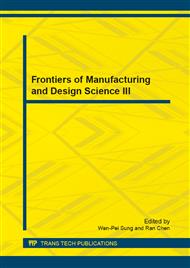p.1328
p.1346
p.1351
p.1356
p.1362
p.1366
p.1372
p.1377
p.1383
Numerical Analysis of Flow Field and Performance Optimization of Axial-Flow Pressure Reducing Valve
Abstract:
In order to promote the technical progress of pressure reducing valve in nature gas transport system, a high pressure pilot operated axial-flow pressure reducing valve was designed and developed. The three-dimensional modeling of the natural gas pressure reducing valve internal flow passage was found by using Solidworks software. Import the flow channel model into meshing in CFD software based on the internal flow channel geometry and flow characteristics. The ideal gas compressible fluid model of natural gas and improved RNG k-Epsilon model were used to solve the pressure and velocity distribution as well as other flow related parameters of the natural gas pilot operated pressure reducing valve. The flow fields of the pressure reducing valve with different valve plug shape were analyzed. Changes of valve plug shape were made to improve the performance of the valve.
Info:
Periodical:
Pages:
1362-1365
Citation:
Online since:
December 2012
Authors:
Price:
Сopyright:
© 2013 Trans Tech Publications Ltd. All Rights Reserved
Share:
Citation:


